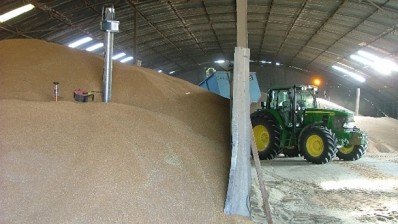Australia/New Zealand
Cautious response to regulator’s 'inconclusive' nano-tech review

Certain compounds, when engineered as particles measuring on the nano scale (one billionth of a metre), can exhibit certain properties; for example, nano-silver particles have antimicrobial properties.
As part of a programme to investigate nanotechnology in food, Fsanz last year commissioned the reports to assess publicly available scientific literature in food and in packaging.
The brief for the authors, led by Roger Drew, one of Australia’s leading toxicologists, was to find out if there was reasonable evidence of health risks associated with oral ingestion of titanium dioxide, silicon dioxide and silver in food.
The researchers found that titanium and silicon compounds had been used safely across the world in a range of food products, though they could find no direct evidence to suggest that the novel nanomaterials are currently being used in food packaging applications in Australia or New Zealand.
Their key finding was that for the most common compounds, “the weight of evidence does not support claims of significant health risks for food grade materials”.
However, Simon Brown, physics professor at Canterbury University, has urged consumers to take a closer look at the findings.
“At first sight this is good news, and so it is a shame that many readers will stop reading [the reports] at this point, believing that there is no issue,” said Prof. Brown.
“Given the very significant scientific uncertainties, I think these reports sound an appropriate note of caution: the situation is not nearly as simple as Fsanz’s key finding suggests.”
For example, the report on food packaging concludes by noting that “relatively few studies… have investigated the migration of nano-particles per se from food packaging materials and the uncertainties in current analytical techniques for measuring possible migrated nano-particles in foods/simulants.”
In other words, there is not much concrete evidence about the safety of these materials, said Prof. Brown, “and we don’t even know very well how to measure if they are present.”
The food additives report also cites the need for “much more” additional research to determine whether microparticles play a part in the pathogenesis of Crohn’s disease and other inflammatory bowel diseases.
However, David Lewis, director of the Centre for NanoScale Science and Technology at Flinders University, praised the report.
Prof. Lewis said: “The use of nano-materials in food packaging offers a lot of benefits and new opportunities. These include the promise of offering extended shelf-life to perishable foods such as red meat and chicken, giving significant food safety and health benefits—not to mention the cost and environmental savings associated with less food wastage.
“This report is a positive step forward to allowing this to happen in Australia and letting us catch up to other parts of the world.”
With the formation of a Scientific Nanotechnology Advisory Group (SNAG) of six Australian and Kiwi academics, Fsanz hopes to delve deeper in the subject.
The role of the group, which features experts in the fields of nanosafety, pharmacology, nano-food technology, toxicology and nanometrology, will be to advise on the development of guidance for a range of stakeholders, future uses of nanotechnology in food and food packaging, and national and international policy.
Separately, the regulator has issued a call for submissions on a proposal investigating chemical migration from packaging into food and whether existing regulations are managing potential risks.
Chief executive Steve McCutcheon said Fsanz had assessed the risks of chemicals migrating from packaging to food and overall the results were reassuring.
“However, we have identified some potential issues and are now seeking comments on possible options to manage them,” he said, adding that agency was also undertaking further surveillance work to inform the proposal.
He invited the general public and all sections of the business, industry and academic community to submit their comments by August 5.
Fsanz has also released a quick-reference template to help food businesses manage food recalls. It can be accessed via the regulator’s web site.
“The template is particularly aimed at helping smaller businesses ensure they have a food recall plan in place and know what to do if something goes wrong,” McCutcheon said.
“This resource is an important addition to our other food recall resources for businesses, such as the Food Industry Recall Protocol.”















